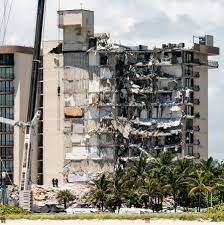 September 2021
September 2021
If your building is less than ten years old and monthly reserve fund contributions are below $200, prepare yourself. New condos are establishing annual reserve fund contributions at about $40 per month when the required contribution should be at least $350 per month.
Most Ontario condominium reserve funds start off underfunded. Those rectifying the situation quickly place their communities on a more stable financial footing. They are better able to support necessary maintenance and desirable upgrades.
The first-year budget created by a developer must include a reserve fund contribution of ten percent of the operating budget. This amount is inadequate. Owners in a new building should quickly increase their reserve fund funding to avoid problems and dramatic increases a few years later. Any condominium corporation less than ten years old where owners contribute less than $200 per month to their reserve fund is likely underfunded.
The reserve fund is infrequently used during the first eight years of a new building. All major components are new and, if properly maintained, should not require major repair or replacement. After eight years reserve fund expenditures begin to increase. After about fifteen years reserve fund expenditures exponentially increase as elevators, boilers, windows, roof and building façade degrade. All require more frequent repair and must eventually be replaced.
“Buildings are getting harder to repair as they grow in height and are built in increasingly congested areas” explains Henry Jansen of Criterium-Jansen Engineers. “The cost of permits and cranes may not have been reflected in earlier reserve fund studies. Generators and other equipment at the top of a higher building, or mid-level, are costlier to replace than those installed at ground level. Greater precipitation and more extreme weather cause greater damage than in prior years. These factors increase the cost of building maintenance and repair regardless of if they are considered when funding a reserve fund.”
Nowhere are the problems of underfunded reserve funds more evident than in Miami. Since the highly publicized building collapse, no fewer than eight buildings have been deemed unsafe and evacuated.
The inflation factor in a reserve fund study, while necessary, fails to reflect the full extent of rising costs. More relevant than inflation is that low spending years “disappear” from the study and are replaced with high-spending years. Failure to account for this by establishing a proper level of reserve fund contributions in the early years can only be compensated by dramatic increases nearer to the time when major expenditures are necessary. This creates a scenario where an immediate cash infusion requires a special assessment or the borrowing of funds.
One solution to avoiding a cash crunch is to establish a proper level of funding for the reserve fund in the early years and maintain this level with inflation-based increases. This can be achieved by increasing the reserve fund study period from thirty to forty-five years.
When greater demands are placed on the reserve fund and contributions need to be increased some resist. They may suggest schemes to avoid a full accounting of costs. One approach is to incorporate a phase-in period for increases as a way to reduce immediate reserve fund contributions at the expense of future owners. A future board often gets blamed for dramatic increases in condo fees because prior boards failed to act prudently.
 Condo communities operate best when owners contribute their fair share to the reserve fund from the beginning. When each owner is underfunding the reserve fund by $4,000 per year over ten or more years, their future likely includes one or more special assessments totaling $40,000 or more.
Condo communities operate best when owners contribute their fair share to the reserve fund from the beginning. When each owner is underfunding the reserve fund by $4,000 per year over ten or more years, their future likely includes one or more special assessments totaling $40,000 or more.







